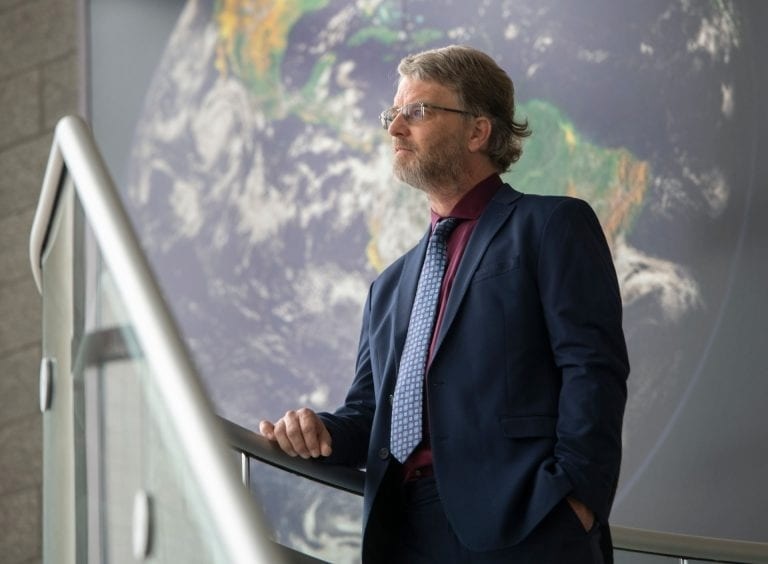According to Earth system scientists at the University of California, Irvine, climate-driven seawater heating is slowing down deep circulation patterns in the Atlantic and Southern oceans. If this trend persists, the ocean’s capacity to absorb carbon dioxide from the atmosphere will be severely constrained, further accelerating global warming.
 J. Keith Moore, UCI professor of Earth system science, says, “… unchecked global warming could lead to a shutdown of the ocean deep circulation. This would be a climate disaster similar in magnitude to complete melting of the ice sheets on land.” Image Credit: Steve Zylius / UCI
J. Keith Moore, UCI professor of Earth system science, says, “… unchecked global warming could lead to a shutdown of the ocean deep circulation. This would be a climate disaster similar in magnitude to complete melting of the ice sheets on land.” Image Credit: Steve Zylius / UCI
These researchers examined projections from thirty-two climate models in a recent study that was published in Nature Climate Change, and they discovered that the Atlantic Meridional.
Overturning Circulation and the Southern Meridional Overturning Circulation will slow down by as much as 42% by 2100. According to the simulations, the SMOC could completely stop by 2300 in the worst-case scenario of global warming.
Analysis of the projections from 36 Earth system models over a range of climate scenarios shows that unchecked global warming could lead to a shutdown of the ocean deep circulation. This would be a climate disaster similar in magnitude to complete melting of the ice sheets on land.
J. Keith Moore, Study Co-Author and Professor, Earth System Science, University of California, Irvine
The Importance of Overturning Circulation
Warm water in the Atlantic cools and evaporates as it moves northward on the surface, becoming saltier and denser. The nutrients that serve as the food base for marine ecosystems are carried up from the depths by this heavier water as it sinks into the deep ocean and travels to the south, where it eventually rises back up.
Additionally, the powerful factory for processing atmospheric carbon dioxide is created by ocean circulation that spans the entire planet. CO2 is drawn into the ocean by the fundamental physical and chemical reaction between seawater and air, or what Moore and his colleagues refer to as a “solubility pump.”
Although some carbon is returned to the atmosphere by the ocean's circulation, the majority is buried deep within the water.
Furthermore, as CO2 is used by phytoplankton for photosynthesis and the formation of carbonate shells, a “biological pump” is created. When larger animals and plankton perish, they sink and slowly decompose, releasing carbon and nutrients deep in the ocean. While some are brought back up by circulation and upwelling, some are left banked beneath the waves.
Moore added, “A disruption in circulation would reduce ocean uptake of carbon dioxide from the atmosphere, intensifying and extending the hot climate conditions. Over time the nutrients that support marine ecosystems would increasingly become trapped in the deep ocean, leading to declining global-ocean biological productivity.”
According to Moore, humans rely on the biological pump and the solubility pump to help remove some of the CO2 released into the atmosphere by burning fossil fuels, managing land use, and other activities.
“Our analysis also shows that reducing greenhouse gas emissions now can prevent this complete shutdown of the deep circulation in the future,” further stated Moore.
Lead author Yi Liu, a UCI Ph.D. student in Earth system science, Francois Primeau, professor and chair of UCI’s Department of Earth System Science, and Wei-Lei Wang, a professor of ocean and Earth sciences at Xiamen University in China, collaborated with Moore on this project, which was funded by the US Department of Energy.
The Coupled Model Intercomparison Project phase 6 (CMIP6) project simulations, which were used to support the IPCC climate assessments, were heavily reliant on the study.
Journal Reference:
Liu, Y., et al. (2022) Reduced CO2 uptake and growing nutrient sequestration from slowing overturning circulation. Nature Climate Change. doi:10.1038/s41558-022-01555-7.